
The Toronto harbour is a place rich in history, complete with buried oddities, unfinished projects, and little known facts.
Although industrial activity has waned at the port over the last 30 years, decades of heavy use has left its fair share of buried boats and strange stories.
The city's relationship with the harbour has become increasingly complicated since the early 20th century when the Harbour Commission filled in a huge portion of the harbour south of Front St.
From the various plans to build on the Islands to the Queens Quay condo boom to the expansion of the airport, the harbour is very much a contested space.
Perhaps that's why its history is so fascinating. Here's a little trip through the past of our port. Next time you pay a visit, it might not look the same.
Whale bones were once found in the harbour
Long attributed to the presence of Piper's Zoo at Front and York streets, the provenance of the whale bones discovered when the TTC excavated the tunnel for the streetcar from Union to Queens Quay remains a complete mystery. Carbon dated back to the 1840s, it's anyone's guess as to how the vertebrae of a whale made it into the inner harbour. Theories anyone?
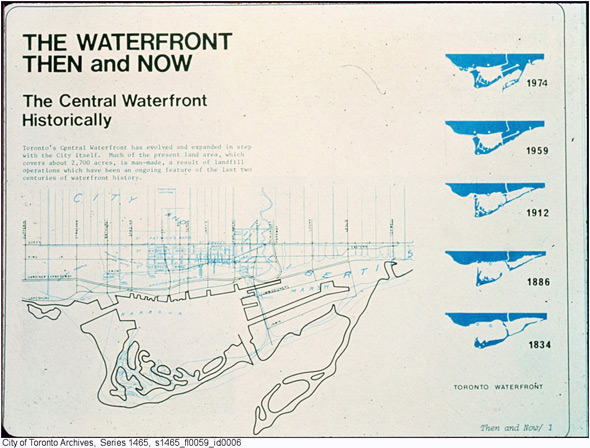
A map of the waterfront then and now. Map by Toronto Archives.
Most of the area south of Front Street is reclaimed land
Starting in the early 20th century, the Toronto Harbour Commission aggressively filled in the harbour, expanding Toronto over a kilometre south. In the early 1920s the Harbour Commission Building was on the water at the edge of a two hundred foot pier, while today it would take someone five minutes to walk to the shore from its front door.
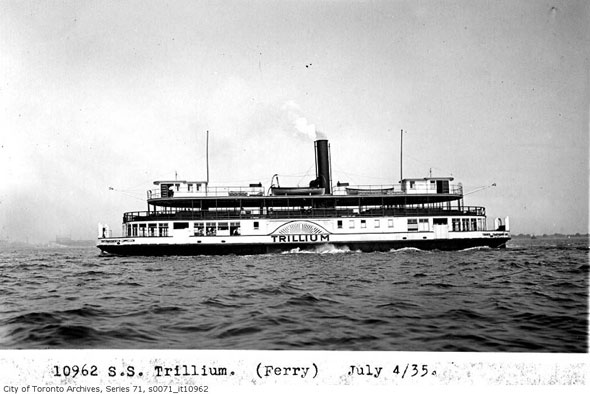
Toronto's oldest ferry. Photo by Toronto Archives.
The oldest ferry dates back to 1910
Built at the Polson Iron Works, formerly a fixture on the east side of the harbour, the PS Trillium has been making the trip to and from the Islands for over a century. It was decommissioned in the 1950s only to return to service in 1976.
Prior to being returned to service the ferry, which was docked at the Yonge St. slip, collided with the MS Normac, the former home of Captain John's, which sank two weeks later.
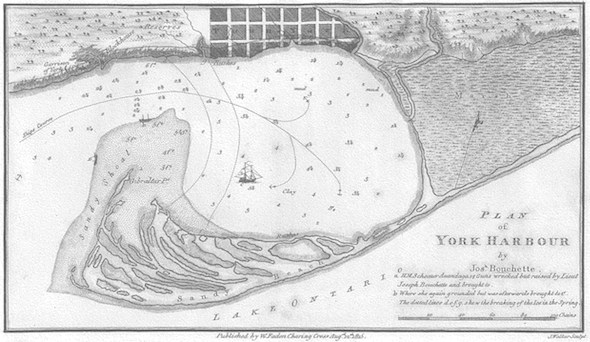
What the map of Toronto's waterfront once looked like.
The Toronto Islands were once a peninsula
Formed from sediment that drifts off the Scarborough Bluffs, the Toronto Islands were once no such thing. Once a long peninsula extending southwest from Ashbridges Bay, a huge storm on April 14, 1858 created what we now call the Eastern Gap, which has remained to this day.
In the 1970s, the city dredged the gap in order to allow major ship traffic into the harbour through this route.
Toronto started a tunnel to the Islands in 1935
The plan to build a tunnel to the Island airport was in the works for a long time, a very long time. In fact, back in 1935 the city actually started construction on the project. While there was opposition to the project from the very beginning, the federal government gave the city money to complete the project.
But, like so many Toronto infrastructure projects, a a change in party leadership - in this case the victory of William Lyon Mackenzie's Liberals - led to a change of plans, and work on the tunnel was halted. The tunnel to the Islands was finally completed in 2015.
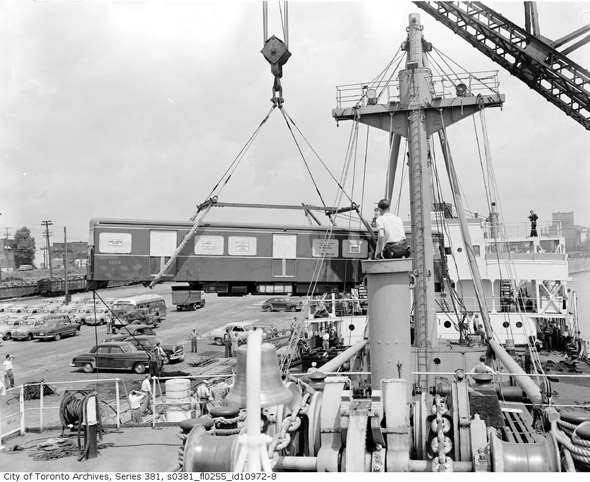
TTC vehicles were once delivered by boat. Photo by Toronto Archives.
Our new subways and streetcars once arrived by boat
Surely one of the most valuable deliveries to our harbour over the years was the first Gloucester subway cars, which arrived by boat from England in 1953.
Many of the PCC streetcars also came through the harbour before entering service. The more recent Bombardier subways and low-floor streetcars were built in Thunder Bay, with shipments coming by train.
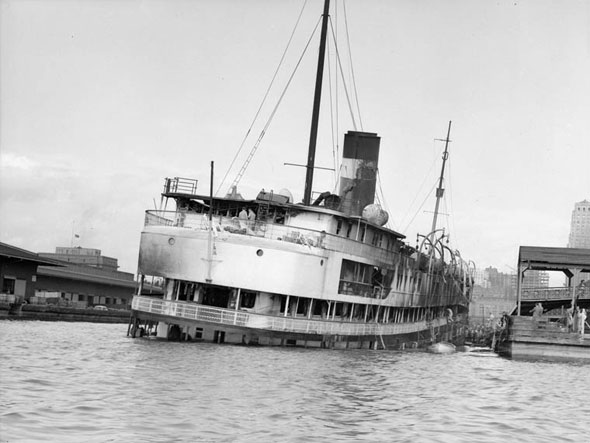
The aftermath of the fire on the S.S. Noronic.
The worst accident in harbour history claimed hundreds of lives
In the early hours of September 14, 1949 the S.S. Noronic caught fire in the Toronto harbour and was terrifyingly consumed by flames in a matter of minutes. The speed of the fire and a the lack of preparedness for an evacuation effort were the primary culprits in the tragedy. The cause of the blaze was attributed to a discarded cigarette.
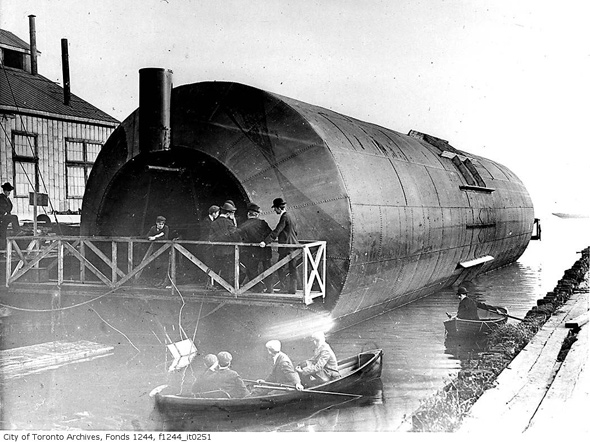
The Roller Boat. Photo by Toronto Archives.
Something called the Roller Boat is buried in the harbour
Of the many strange things sunk in the harbour, the Roller Boat might take the cake. Augustus Knapp built this oddity in the late 19th century in the hopes of improving the trip across the Atlantic. T
he concept was a disaster and barely worked to ferry passengers around the Toronto harbour. The boat is buried somewhere near Lake Shore Blvd. and Sherbourne St.
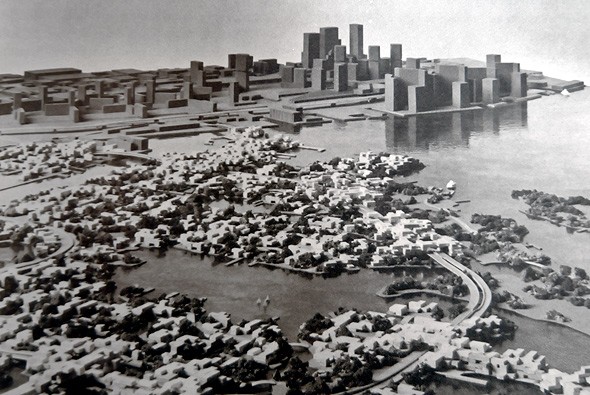
The vision for Harbour City.
Toronto almost built a mini-city on the lake
Before Sidewalk Labs came and went, Harbour City was one of the most ambitious projects Toronto never completed.
To be built on the Islands and an additional 510 acres of infill, the island community was to feature canals, a ring road that would connect it to the mainland (at Bathurst and Strachan streets) and pre-engineered building modules. Eventually the provincial government killed the idea.
1.6 million tonnes of goods pass through the harbour in a typical year
Yes, the harbour is still used as an industrial port. Much of this activity involves Redpath Sugar, which has operated its refinery at the foot of Jarvis St. since the 1950s.
The Toronto Port Authority removes 150 million pounds of debris from the inner harbour on a yearly basis to keep navigation safe. It's also the busiest port in the country for pleasure boats.
by Derek Flack via blogTO

No comments:
Post a Comment